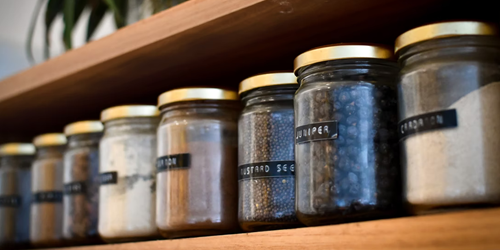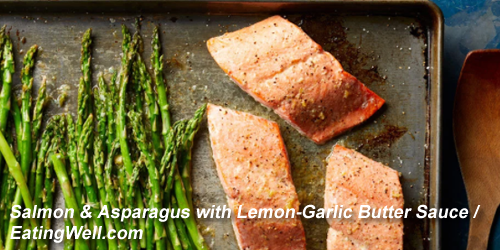Category: Monthly Matters
Well-Being Refresh

Refresh in January
A new year can bring new energy to refresh your well-being! The truth is we don’t need a new year to make positive changes, but sometimes the fresh start can be what it takes to get us started. If you’re thinking about making some changes this year, be sure to think small. It is common to get carried away with a grand new year’s resolution, but habit-building science confirms that small, consistent changes lead to better outcomes.
Here are six small and simple ways you can refresh your well-being in the new year!

Reflect: Take some time to look back on the past year. What went well? What was challenging? What kinds of things do you want to do again? What types of things do you want to avoid, if possible? Looking back on where you’ve been can help you determine where you want to go. Use your reflection of 2021 to help you establish and define your intention for 2022.

Clean Your Physical Environment: Start the new year with a clean and organized space, whether that’s at work, at home, or both! Think about your goals and intentions for the upcoming year and determine which areas could use a little tidying. Maybe you want to clean out your kitchen pantry or purge your clothes closet, or finally tackle that old filing cabinet. You don’t have to do it all at once, but start somewhere and do one space at a time…even if that means you won’t be done until next January.

Clean Your Digital Environment: Don’t let technological noise take up precious space in your brain and life. Use the new year as an opportunity to unfollow and unsubscribe from digital content that is no longer serving you. If you’re feeling bold, you may delete some apps altogether!

Update Your Routine: Routines can help you manage change, stick with healthier habits, and reduce overall stress. If you’ve noticed yourself out of your regular morning or evening routine (or you’ve never had a routine), now is the time to get on track. Think of a few things that make you feel your best, and try incorporating them into a simple routine. Perhaps that means getting up 20 minutes early to read or journal before the rest of your family wakes. Or maybe you’ll start putting on your walking shoes as soon as you get home so you can take the dog for an evening walk. It could even be setting aside time on Sunday afternoons to grocery shop and meal prep for the week ahead. Keep track of how many days or weeks in a row you can maintain your routine to add extra motivation.
Goal Setting
Resolutions are easy to make but hard to follow through with. This is because most resolutions (I want to get healthy. I want to lose weight. I want to be more organized. I want to save more money.) are too vague and do not incorporate concrete actions. On the other hand, effectively developed goals are specific, finite, and help you stay focused on your desired outcome.
- You can set a goal for almost anything! Whether you are training for a race, trying to eat more vegetables, or saving for a big purchase, making your goals SMART sets you up for success!
- Be purposeful in your goal setting. Choose a small number of objectives that are the most important to you. A goal should include a metric that lets you know you have accomplished it.
- It is easier to stick to a new behavior with a supportive network. Accountability can be motivating and is critical for success. Tell friends, family, and co-workers about your goals and ask them for support.
Happy, Healthy Holidays

Make the holidays merry and bright by prioritizing your well-being! Use the following tips, ideas, and strategies to keep you and your loved ones healthy this holiday season.

Keep it Simple
One of the fastest ways to holiday burnout is to set high, unrealistic expectations for yourself. Make your plans simple and your activities doable.

Create a Holiday ‘Bucket List’
Create a ‘bucket list’ of fun, realistic things to do this holiday season. Ideas might include watching a favorite holiday movie, decorating cookies, donating to charity, looking at Christmas lights, etc.

Pace Yourself
The holiday season lasts for several weeks. Break your holiday preparations into small steps so you can accomplish a little each week. Also, do not forget the first tip and ‘keep it simple’ to prevent holiday burnout.

Reflect on Past Holidays
Think back to moments you have treasured during past holiday seasons, and try to recapture the essence of what made those times special even though it might not be exactly the same.

Look Forward with Optimism
Setting goals challenges us to aim for higher fulfillment and self-improvement. Give yourself something to look forward to next year. Set small, realistic resolutions, and ask others to help you stay accountable.

Talk to Someone Who Cares
If you feel bogged down by a case of the holiday blues, do not suffer through the season. Reach out and talk to someone you trust.
*Source: Tips for Coping with Holiday Stress This Year by ComPsych Guidance Resources
GuidanceResources® is ComPsych’s online access to timely, expert information on thousands of topics, including relationships, work, school, children, wellness, legal, financial and free time. Visit GuidanceResources.com, click the Register tab, and enter your Organization Web ID: SOIEAP.
An Attitude of Gratitude

When life gets challenging, it can be difficult to focus on all the good things we have to be thankful for. Our brains are hardwired to consider the worst possible scenario and remember negative experiences to avoid pain and stay safe in the future. Gratitude is one way to counteract our natural bias towards negativity to boost happiness and overall well-being.
Gratitude Tips
- Take a moment. Think about the positive things that happened during the day.
- Jot it down. Make a habit of writing down things you’re grateful for. Try this 30 day gratitude journal!
- Savor your experiences. Try to notice positive moments as they are happening.
- Relive the good times. Relive positive moments later by thinking about them or sharing them with others.
- Write to someone. Write a letter to someone you feel thankful toward. You don’t have to send it.
- Make a visit. Tell someone you’re grateful for them in person.
Source: https://newsinhealth.nih.gov/2019/03/practicing-gratitude
Valentine’s Recipe Roundup
There is something for everyone in this Valentines recipe roundup! Express your love by making a healthy and delicious meal for someone you care about…or just for yourself, because you deserve it too!

Heart-Shaped Pizza with Bell Peppers / EatingWell.com
family friendly / fun to make

Baked Chicken Parmesan / Tasty.com
healthy comfort food / easy peasy

Salmon & Asparagus with Lemon-Garlic Butter Sauce / EatingWell.com
low carb / healthy salmon

Spaghetti with Lemon & Toasted Walnuts / VegetarianTimes.com
meatless / healthy comfort food

Stir-Fried Shiitake Mushrooms with Tofu & Bok Choy / BetterNutrition.com
vegan / takeout fake-out

Kid-Friendly Fondue / SuperHealthyKids.com
family friendly / fun to eat

Mediterranean Beef Pinwheels / IDBeef.org
meat lovers / feels fancy

Easy Shrimp Ceviche with Avocado / TheKitchn.com
low carb / seafood

Thai Beef Salads / MyRecipes.com
meat lovers / takeout fake-out
 Official Government Website
Official Government Website

